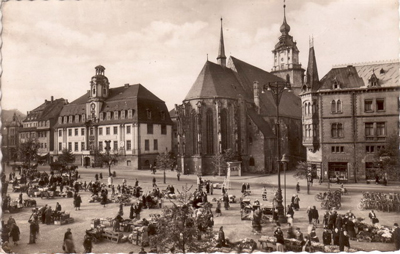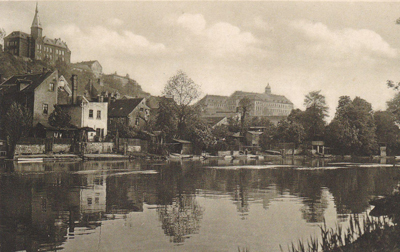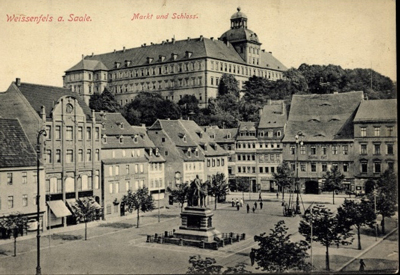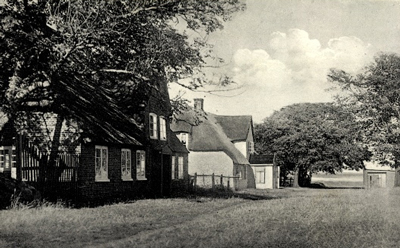Adrian Leverkuhn's exercise books |
|||||||
The exercise books by Adrian contain the complete transcripts of the lessons taught by Wendel Kretzschmar, an organ player in Halle and the only musician that grandfather acknowledged as his composition teacher. The first books present a methodic exposition of Kretzschmar's musical thought, dividing his treatise into 18 lessons, and titled "Harmony 1"by Adrian. After some years, these books appear againi n 1905 in Leipzig, where Adrian had moved and this time they present a solitary and severe study of the laws defining polyphonic counterpoint. They undergo a systematic and in-depth research from the first developments of Sacred music, (Gregorian chants) with which the history of Western music begins to harmonic fugue by Bach, the last development of the style of equal voices. Previously everyone had been focused on accompanied melody. I believe that Adrian delved into the study of polyphonic counterpoint to look for those essential linguistic procedures that make the formation of meaning and intention possible. This enquiry can be said to be the dominating object of his research, should we want to define it from an harmonic point of view. The books go on as a systematic recap of all the constituting principles of the system, arriving at an analysis of melodic construction, which is developed in a series of in-depth studies on the construction of phrases, themes and forms. So here the long and winding artistic course of Adrian Leverkűhn within the history of his growth is described, beginning with Lesson 1 and interrupting itself only when his intellect left the main road and lost itself following secondary paths. The famous 18 lessons began in May 1900 in Weissenfels, a town some forty miles away from Halle, which is called Kaisersaschern in "Doktor Faustus", and where Adrian lived for nine years, hosted by his uncle. The books begin with these diary pages describing a keen and curious youth, which I did not want to omit. Adrian is 15 years old, he wants to laugh and not hide the humorous affects of the Maestro, as he calls him. But he doesn't hide the sympathy and affection towards that talkative and stuttering thinker. In those early years, the pupil considered Kretzschmar's deep erudition and eloquence as one of the seven wonders. Adrian closes those early pages of the diary preceding the exercise books, declaring his unshakeable determination in learning the art of the composition of sound. It was a form of idealism still in use around those years, before the arrival of Zarathustra. As we know, throughout his life this resolve never dwindled and brought him to end his days wandering aimlessly through the mists of his solitude, after having demonstrated to his contemporaries that only music can express the beauty of human pain. I have read many times those diary pages and all the following ones, and going back to the "Prologue", I realize that my own writing is unwittingly trying to sound like his. All the forms built and realized by Adrian end up convincing me so much that I strive to emulate them. As a partial justification of this vice, I put forward the hypothesis that imitation might be tolerated as a first unavoidable step towards the development of the imitated model. But this is already theory of the form, and I prefer for Adrian to talk about it, since he gives a clear and systematic synthesis in his books. |
 |
||||||
 |
|||||||
 |
|||||||
|
|||||||
 |
|||||||
 |
|||||||
Adrian Leverkühn - First exercise books |
|||||||
Weissenfels, May 10, 1900. I, however, carefully listened to that inspired and knowledgeable speaker of music, philosophy, art and humanities at large. |
 |
||||||
Often his words hit me profoundly. I also like the man because in an heroic manner he unites a hard and stubborn stutter, often afflicting him in the least likely of moments, to a impassioned effort to communicate to his neighbor, with obstination, enthusiasm and ardor. This renders him dear to me. However, his torrential and sometimes extravagant lectures (with musical exemples played on the rickety piano in the hall, then drawn out on a blackboard, by means of arrows, graphs and staff) managed to activate one of my childhood projects, surviving within fantasy and hopes. |
 |
||||||
To define the spot that those words hit, I have to return to the old barn of the house in which I was born, when one evening I got together with the rest of the kids living on the farm and Hanne, the stable girl, taught us the child's canons. It was on that evening – I was ten years old – that the full force of music hit me for the first time, like a lightning bolt. An unexpected intuition that, thanks to that simple artifice of delayed entries, announced to me the huge power of music over my effects, as they have called them, the power to unleash irrational and very pleasurable emotions, its magic, its spell. It was the first time. |
 |
||||||
|
 |
||||||
That determination would translate into the more mature dream of writing "good music" (as promised by one of the titles of Kretzschmar's lectures), a vague and idle desire to which the meeting with this organ player offered a sweet and secure start. It was his last lecture that convinced me to face this road and to open the diary I am writing.
|
 |
||||||
 |
|||||||
 |
|||||||
 |
|||||||
As a premise to his first lesson I copied the scheme that I had drawn while listening to his last lecture, the one that pushed me to ask him to teach me. What is good to know in order to write good music |
|||||||
The necessary study to compose can be divided into three big single topics: |
|||||||
|
|||||||
In reality, after this very precise classification, Kretzschmar clarified that those three topics are combined from the very first steps: in order to write a good study in harmony the beginner will structure it into 8 bars, beginning to reason over the half-phrase of 4 bars which must end with a cadenza. After all, a good melodic line deserves to be enhanced by a counterpoint line sustaining it and perhaps exalting it (that is the way the good Kretzschmar expressed himself). The virtue of this lecture has been that of describing precisely the course that a student without any basis (like me) has to take in order to be able to express himself with sound.
|
|||||||
| next | |||||||